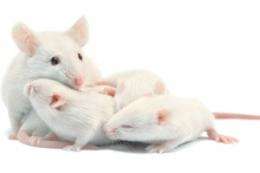Polyandry drives increased embryo viability

An experimental evolutionary study on house mice (Mus musculus) has found multiple mating is beneficial for both males and females.
The UWA study, in its sixth year running, has found that polyandry drives increased embryo viability in a vertebrate and that the risks associated with multiple mating were far outweighed by the benefits.
UWA Postdoctoral Fellow Renee Firman says females benefit directly from polyandry through healthier and numerous embryos and producing offspring of greater fitness.
“Females are interested in protecting their own ‘fitness’ or ‘genetic investment’,” Dr Firman says.
Fitter partners are preferential for females and males, both for the added ability to reproduce and for the ability of future offspring to reproduce.
Dr Firman says research began with asking why females choose multiple mating when it is energetically expensive.
“Risks associated with mating include increased likelihood of predation and disease, therefore females would need to benefit in some way from soliciting multiple partners,” Dr Firman says.
A previous paper on the study has already been recognised as the best published article among scientific fields by UWA.
In previous studies polygamously mated and monogamously mated lines of house mice were monitored in studies which included ‘sperm competition’ tests.
Sperm from males of the polygamous line was more competitive than sperm from the monogamous lines which translated to greater fertilisation success, selection of good genes, and increased ejaculate quality.
Dr Firman says the team are now up to the 25th generational line and will begin running sperm competitions outside of females using in-vitro fertilisation.
She says this will enable the team to study gametic interactions more efficiently.
Most work on polyandry has been done on insects because they are easier to use and manipulate within the laboratory.
“It’s novel to be doing this kind of research with a mammal especially with the duration we’ve been maintaining the selection lines,” Dr Firman says.
An international study that categorised mice in high, medium and low sperm competitiveness groups, found competitive-sperm males had greater fertilising capacity but female recipients had more resistance to fertilisation.
Dr Firman says she would like to undertake future research in this area.
The study, ‘Male house mice evolving with post-copulatory sexual selection sire embryos with increased viability,’ was published in the Ecology Letters Journal and was collaborated between Dr Firman and Dr Leigh Simmons.
Source: ScienceNetwork Western Australia

















